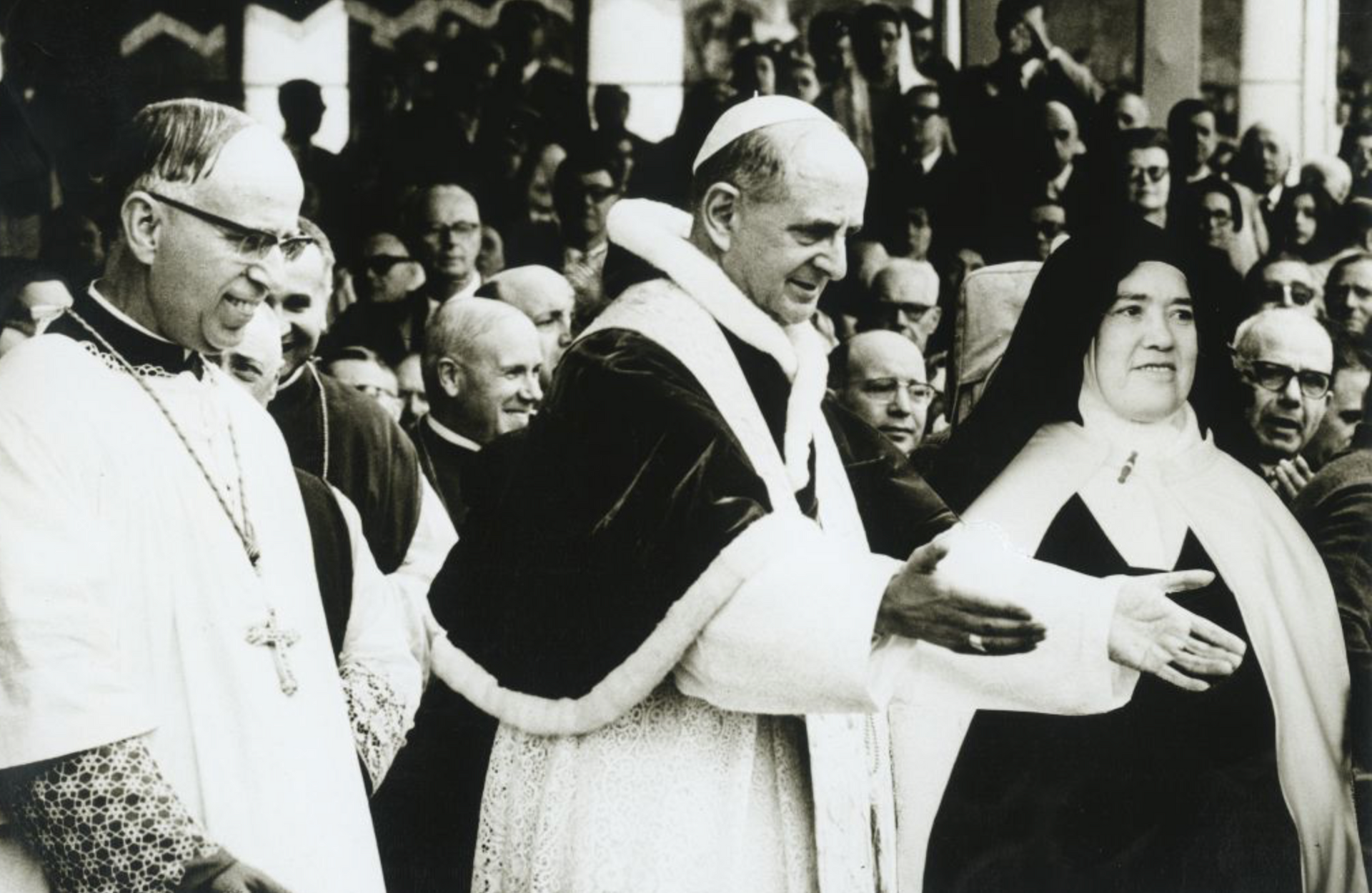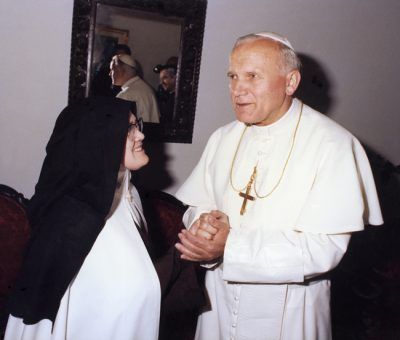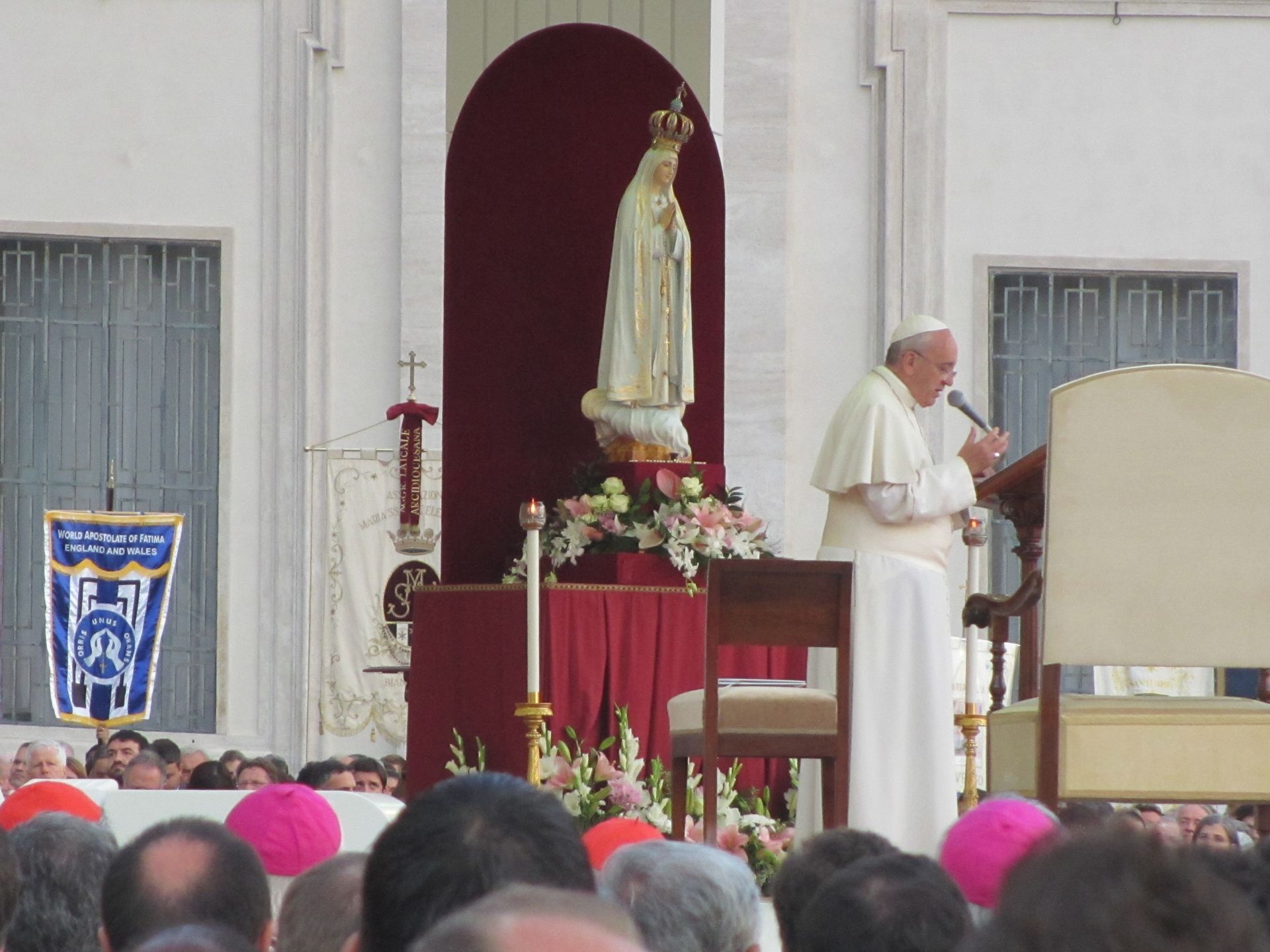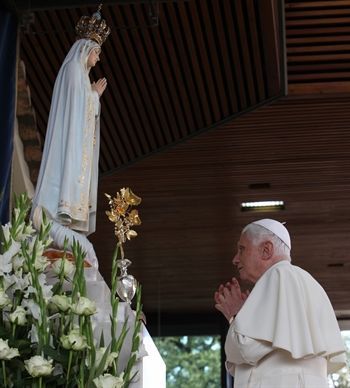The Rosary and Fatima
At every one of her 6 apparitions in Fatima from May to October 1917, Our Lady specifically asked for the Rosary to be said every day, and as if to emphasise its importance even further, in her final apparition on 13th October 1917 she declared: “I am the Lady of the Rosary”.
It was this aspect of her message on which she placed the greatest emphasis, and the reason for it was made clear by the declaration on the Rosary by St John Paul II when he first travelled to Fatima in 1982, and subsequently in the luminous teaching on the value and power of the Rosary in one’s daily life as a Catholic, in his Apostolic Letter Rosarium Virginis Mariae, issued on 7 October 2002.
The teaching in this document which is easily readable is an inspirational aid to understanding the meaning and relevance of praying the Rosary in one’s daily life. It is perhaps best summarised in the following pronouncement:
“The Rosary, though clearly Marian in character, is at heart a Christocentric prayer … it has all the depth of the Gospel message in its entirety, of which it can be said to be a compendium” (Pope John Paul II – Rosarium Virginis Mariae, n. 1).
In his homily at Fatima on 13 May 1982, Pope John Paul II said that the Rosary is Mary’s prayer, “in which … she herself prays with us. Take care of your inheritance of faith … do you want me to teach you the secret of keeping it ? It is simple, Pray, pray very much, pray, recite the Rosary every day”
OUR LADY'S WORDS ON THE ROSARY
May 13th: “Pray the Rosary every day to obtain peace for the world and an end to the war.”
June 13th: “I want you to pray the Rosary every day.”
July 13th: “I want you to continue to pray the Rosary every day in honour of Our Lady of the Rosary, to obtain peace for the world and the end of the war because only she can help you.”
August 19th: “Continue praying the Rosary every day.”
September 13th: “Continue to pray the Rosary every day in order to obtain the end of the war.”
October 13th: “I am the Lady of the Rosary. Continue always to pray the Rosary every day.”
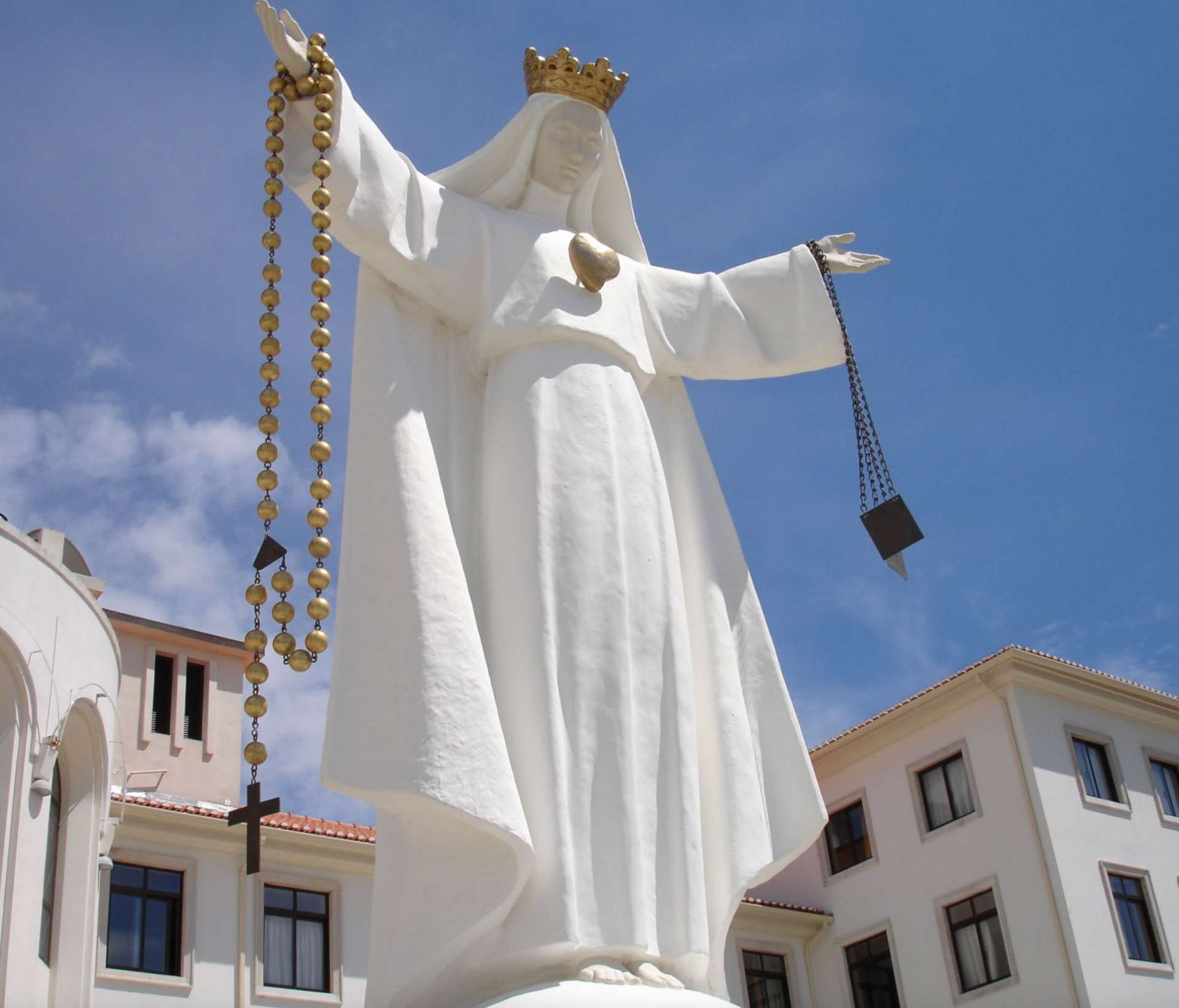
The Power of the Rosary
One example of the power of the Rosary was dramatically shown in 1955, when the occupying Soviet Army voluntarily left Austria. Fr Petrus Pavlicek, a Franciscan, had organised a Rosary Crusade from 1946 onwards, which eventually had ten percent of the population praying five decades of the Rosary daily for peace in the country. He also organised candlelit processions in Vienna with a pilgrim Virgin statue of Our Lady from Fatima, which from the beginning were led by the Federal Chancellor, Figl, and then by his successor, Raab.
On 13 May 1955 it was announced that the Soviets were willing to withdraw their troops from Austria and sign a peace treaty. This was the only time in the history of the Soviet Union that the Red Army voluntarily withdrew from a country it had occupied, without firing a shot. In contrast, the attempted uprisings in Hungary, in 1956, and Czechoslovakia, in 1968, were brutally put down by Soviet tanks.
Shortly before the last Soviet troops left the territory of Austria, on 26th October 1955 there was another huge torchlight procession in thanksgiving. In his address to the vast crowd, Raab, the Federal Chancellor, asked Austria’s faithful Catholics to remain true to their faith and unswerving in their prayers to the Queen of heaven. “But for today”, he concluded, “we want to send up a joyful prayer to heaven and end it with the words: ‘We are free ! Mary, we thank you !’” (He taught millions to pray – Fr Peter Pavlicek, OFM, by Hilda Firtel, Rosary Crusade for the Peace of the World, Vienna).
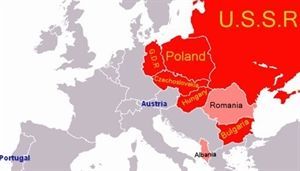
The Rosary needed for Peace and the family
The Pope wrote that a revival of the Rosary was needed in order to meet two pressing issues facing society: the need for peace — as requested by Our Lady at Fatima; and the needs of the family, “the primary cell of society, increasingly menaced by forces of disintegration … so as to make us fear for the future of this fundamental and indispensable institution and, with it, for the future of society as a whole. The revival of the Rosary in Christian families will be an effective aid to countering the devastating effects this crisis typical of our age”. (n. 6).
– By immersing us in the mysteries of the Redeemer’s life, [the Ro] ensures that what he has done and what the Liturgy makes present is profoundly assimilated and shapes our existence (n. 13).
– Contemplating the scenes of the Rosary in union with Mary is a means of learning from her to ‘read’ Christ, to discover his secrets and to understand his message … she teaches by obtaining for us in abundance the gifts of the Holy Spirit. (n. 14).
– Never as in the Rosary do the life of Jesus and that of Mary appear so deeply joined. Mary lives only in Christ and for Christ ! (n. 15).
THE ROSARY FOR THE FAMILY AND CHILDREN – SECTIONS 41, 42
The Rosary is and always has been, a prayer of and for the family (n. 41)
Why and how to pray the Rosary
How to meditate on the Rosary
WAF Rosary Group Leaflet
PDFs on the Rosary etc available here:
https://www.fatima-dominicans.com/portal/index.php?id=1106
from the Dominicans of Pius XII website.
QUOTATIONS ON THE ROSARY
Sr Lucia of Fatima
There is no problem, no matter how great, that cannot be solved by the fervent prayer of the holy Rosary.
St John Paul II’s homily, Fatima, 13.5.1982
The Rosary is Mary’s prayer, in which … she herself prays with us. Take care of your inheritance of faith … do you want me to teach you the secret of keeping it ? It is simple, Pray, pray very much, pray, recite the Rosary every day.
St Pio
St Pio, to friends who asked him for spiritual advice shortly before he died: – Love O Lady, help others to love Our Lady, always recite the Rosary (he used to say the Rosary continuously himself).
St Louis de Montfort
Reverently pronouncing the holy name of Mary in prayer will cause the Word of God to take root in the soul and bring forth Jesus, the fruit of life. Secret of Mary.
EXTRACTS FROM ROSARIUM VIRGINIS MARIAE — BL JP2’S APOSTOLIC LETTER ON THE ROSARY, OCT 2002 (CTS)
– A prayer of great significance, destined to bring forth a harvest of holiness …
1). – Though clearly Marian in character, at heart it is a Christocentric prayer [and] has all the depth of the Gospel message in its entirety, of which it can be said to be a compendium …
2). – Through the Rosary the faithful receive abundant grace, as though from the very hands of the Mother of the Redeemer”. (RVM, n. 1)
– Leo XIII on 1 September 1883 promulgated the Encyclical Supremi Apostolatus Officio, a document of great worth … in which he proposed the Rosary as an effective spiritual weapon against the evils afflicting society. (RVM, n. 2).
3). – [The mysteries of the Rosary] put us in living communion with Jesus through we might say the Heart of his Mother. At the same time, our heart can embrace in the decades of the Rosary all the events that make up the lives of individuals, families, nations, the Church and all mankind; our personal concerns and those of our neighbour, especially those who are closest, dearest to us. The simple prayer of the Rosary marks the rhythm of human life (n. 2)
FATIMA AFTER THE APPARITIONS
Meanwhile, work on the construction of the Capelinha, the Chapel of Apparitions, began on 28 April 1919 and was completed on 15 June; the first Mass was celebrated there on 13 October 1921. The pedestal on which the image of Our Lady stands in the Capelinha marks the exact spot where the little holm oak grew on which Our Lady appeared. In May 1922, Bishop Jose Correia da Silva of Leiria-Fatima, named a commission of enquiry to analyse the facts surrounding the Fatima phenomenon “with strictness and impartiality”.
On 10 December 1925, Sr Lucia, who had become a postulant with the Dorothean Sisters, was at their convent in Pontevedra, Spain, when she saw another apparition, this time of Mary with the Child Jesus. Mary told Lucia that she promised all the graces necessary for salvation to those who, on the first Saturday of five consecutive months, confessed, received Holy Communion, recited five decades of the rosary, and meditated on the rosary for fifteen minutes, all with the intention of making reparation to her Immaculate Heart.
Meanwhile, on 13 January 1924, Mass was celebrated for the first time inside the Capelinha, while on 26 June 1927, the bishop presided for the first time at an official event—the inauguration of the 14 kilometre Way of the Cross to the Cova da Iria, where he celebrated Mass in the presence of 400 pilgrims. Building work on he Basilica of Our Lady of the Rosary of Fatima was begun in 1928, and it was consecrated on 7 October 1953. It has 15 altars dedicated to the 15 mysteries of the Rosary. The bodies of Jacinta and Francisco were moved to their present positions, to the left and right of the main altar, in the early 1950s, and Sr Lucia’s body was interred in the Basilica in 2008 next to Jacinta’s. The mortal remains of Bishop Correia da Silva, who died in 1957, are interred in the Chancel.
Prior to this, on 13 June 1929 Sr. Lucia, while at prayer in the convent chapel at Tuy, saw a vision of the Most Holy Trinity, with Mary standing on the altar displaying her Immaculate Heart in her left hand. It was on this occasion that Mary asked the Pope, in union with all the bishops of the world, to make the [collegial] consecration of Russia to her Immaculate Heart that she had announced during the July 1917 apparition.
On 13 October 1930 the Bishop issued a pastoral letter on the apparitions, which, after recounting the events at Fatima, contained the following brief but important statement:
“In virtue of considerations made known, and others which for reasons of brevity we omit; humbly invoking the Divine Spirit and placing ourselves under the protection of the most Holy Virgin, and after hearing the opinions of our Rev. Advisors in this diocese, we hereby:
- Declare worthy of belief, the visions of the shepherd children in the Cova da Iria, parish ofFatima, in this diocese, from the 13th May to13th October, 1917.
- Permit officially the cult of Our Lady of Fatima.”
In thanksgiving for this development, six months later, on 13 May 1931, a vast pilgrimage of around 300,000 people came to Fatima to participate in a ceremony presided over by Cardinal Cerejeira, Patriarch of Lisbon, at which all the bishops of Portugal made the first consecration of their country. It was this consecration, and that of 1938, which preserved Portugal from the violent attack on the Church in the Spanish Civil War, and its renewal in 1940 saved Portugal from being dragged into the horrors of the Second World War.
Fatima developments from World War II onwards
On 31 October 1942, during World War II, Pope Pius XII, speaking in Portuguese by radio, consecrated the world to the Immaculate Heart of Mary, with a special mention of Russia, in response to the request he had received in a letter from Sr Lucia. Some months later Sr Lucia said that as a result of this act, God promised to end the war soon.
On 13 May 1946, Cardinal Masella, the Papal Legate, crowned the Statue of Our Lady of Fatima in the Capelinha as Queen of Peace. This crown was made from gold melted down from wedding rings donated by the women of Portugal, and it also contains over 4,000 precious stones, which they contributed in thanksgiving for Portugal having been spared the horrors of the Spanish Civil War and the Second World War.
On 13 October 1951, Cardinal Tedeschini, who was in Fatima for the closing of the Holy Year, revealed that in October 1950, at the time when he had promulgated the dogma of Mary’s Assumption into heaven, Pope Pius XII had witnessed a repetition of the solar miracle of 13 October 1917, while he was walking in the Vatican gardens.
Cardinal Roncalli, the Patriarch of Venice, and the future Pope John XXIII, presided at the ceremonies at Fatima on 13 May 1956, while, on 21 November 1964, Pope Paul VI, at the conclusion of the third session of the Second Vatican Council, proclaimed “the Most Blessed Mary Mother of the Church”; the Pope also considered it was “particularly opportune” to recall Pius XII’s consecration of the world to the Immaculate Heart of Mary; and bearing that consecration in mind, he announced before the 2,500 Council Fathers, that a Golden Rose was to be presented to the Sanctuary of Fatima (this act was carried out on 13 May 1965 by Cardinal Cento, the Papal Legate); and the Pope concluded his address by proclaiming, “to your Immaculate Heart, O Mary, we commend the entire human race”.
Pope Paul VI came to Fatima on 13 May 1967 to celebrate the 50th anniversary of Our Lady’s first Apparition, and to pray for world peace and Church unity. In a significant sign of papal approval for the message of Fatima, the Pope invited Sr Lucia to join him on the external altar in front of the crowds, and in his Apostolic Exhortation Signum Magnum, issued on the same day, Paul VI urged “all members of the Church to consecrate themselves once again to the Immaculate Heart of Mary and to translate this pious act into their daily lives”.
Ten years later, on 10 August 1977, the future Pope John Paul I, Cardinal Luciani, Patriarch of Venice, came on pilgrimage to Fatima.
MARY’S ROLE IN THE PROCESS OF OUR CONFIGURATION TO CHRIST
“Our entire perfection consists in being conformed, united and consecrated to Jesus Christ. Hence the most perfect of all devotions is undoubtedly that which the most perfectly conforms, unites and consecrates us to Jesus Christ. Now, since Mary is of all creatures the one most conformed to Jesus Christ, it follows that among all devotions, that which most consecrates and conforms a soul to our Lord is devotion to Mary, his Holy Mother. The more a soul is consecrated to Mary, the more it is consecrated to Jesus” (St Louis de Montfort, Treatise on the True Devotion to the Blessed Virgin, p. 84). (Cited in RVM, n. 15).
– The Rosary is both meditation and supplication. Insistent prayer to the Mother of God is based on confidence that her maternal intercession can obtain all things from the heart of her Son (n. 16).
– [The Rosary] continues to be a valuable resource for every good evangeliser (n. 17).
– What is really important is that the Rosary should always be seen and experienced as a path of contemplation (RVM, n. 38).
UK HEADQUARTERS
World Apostolate of Fatima
Headquarters
International UK phone
Email:
Skype
PARISH ACTIVITIES


